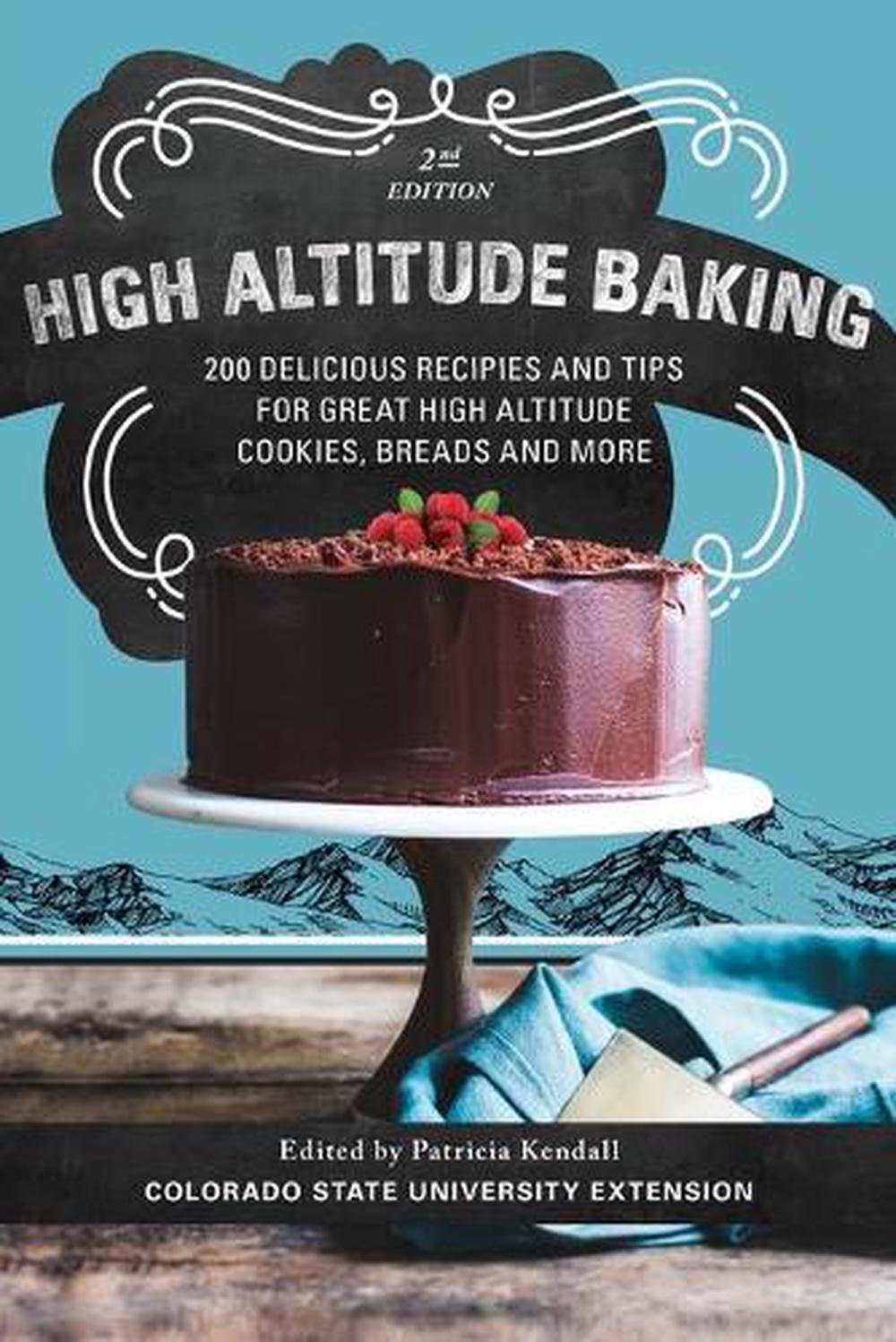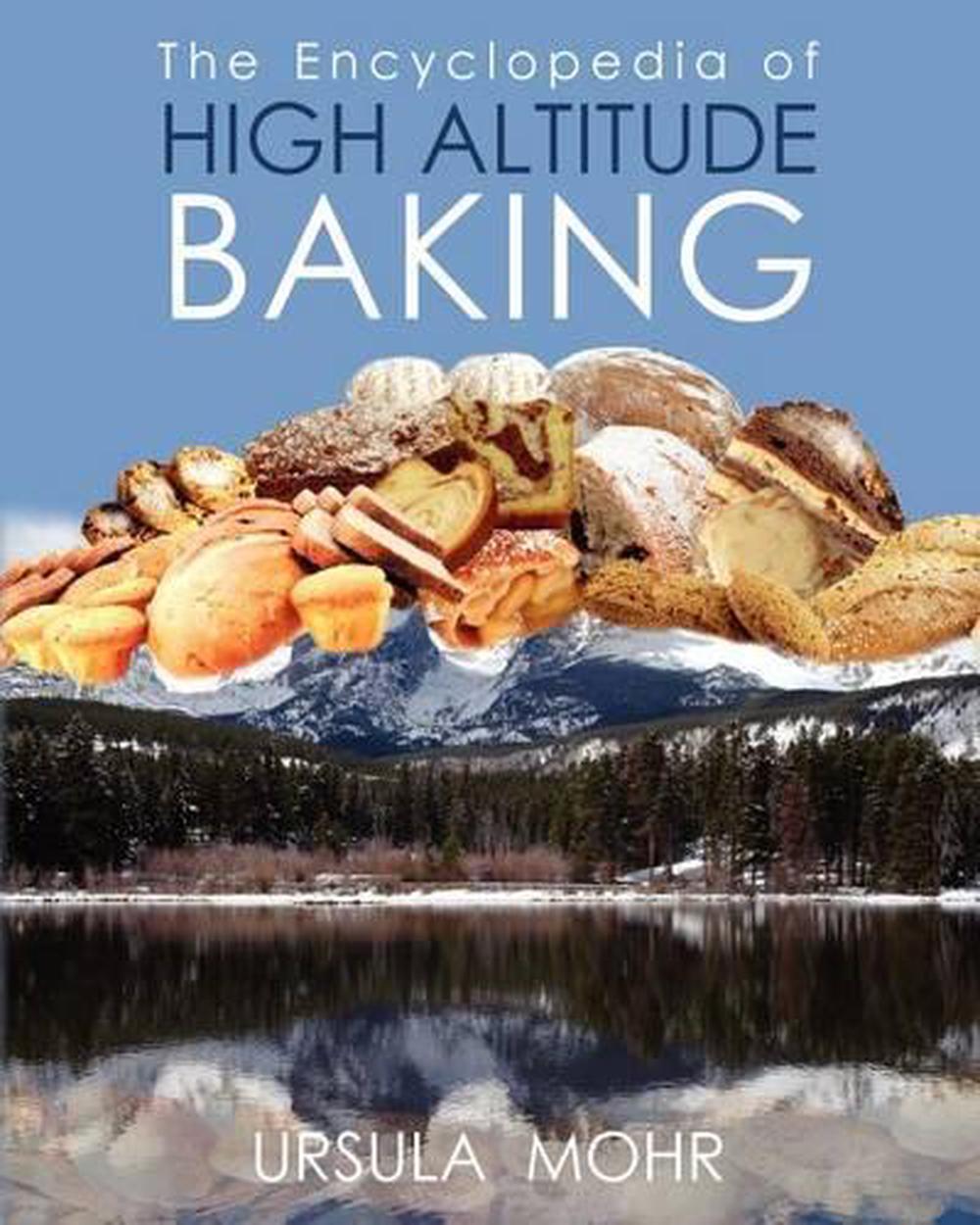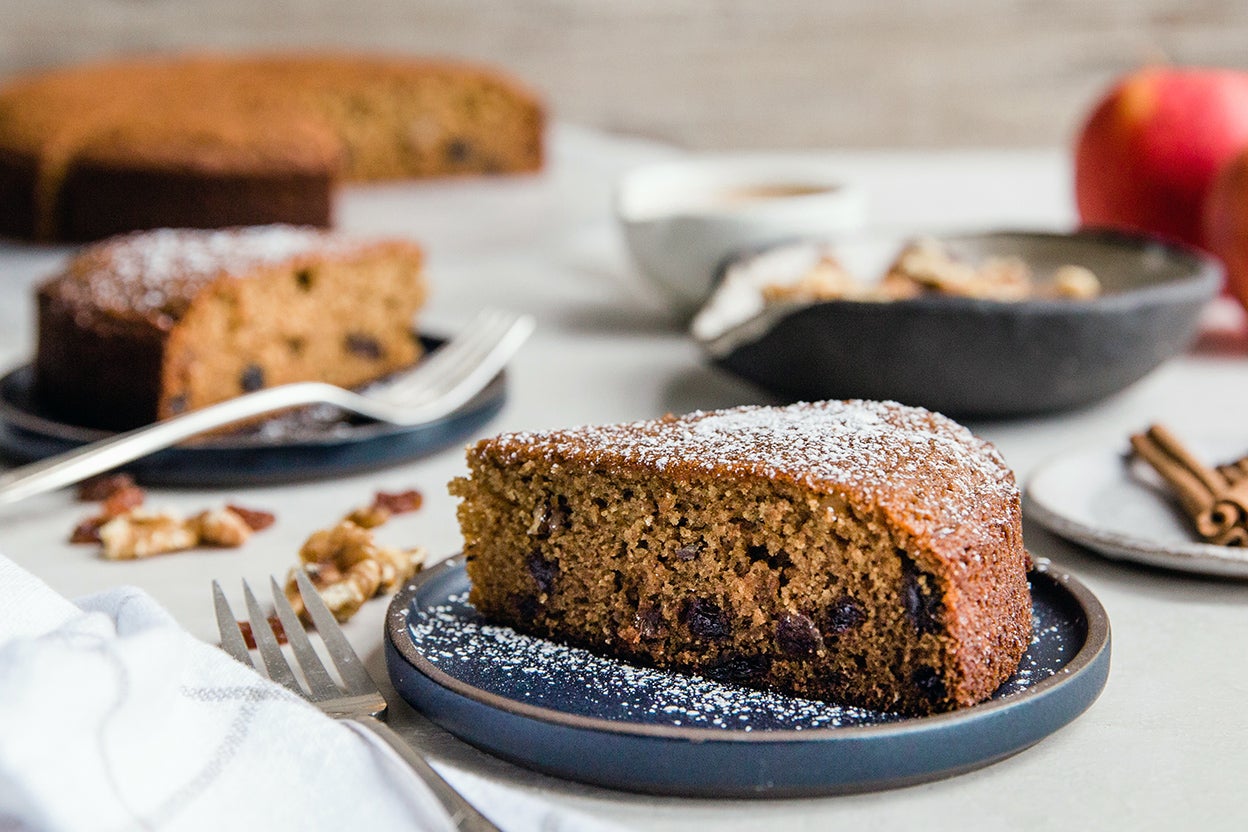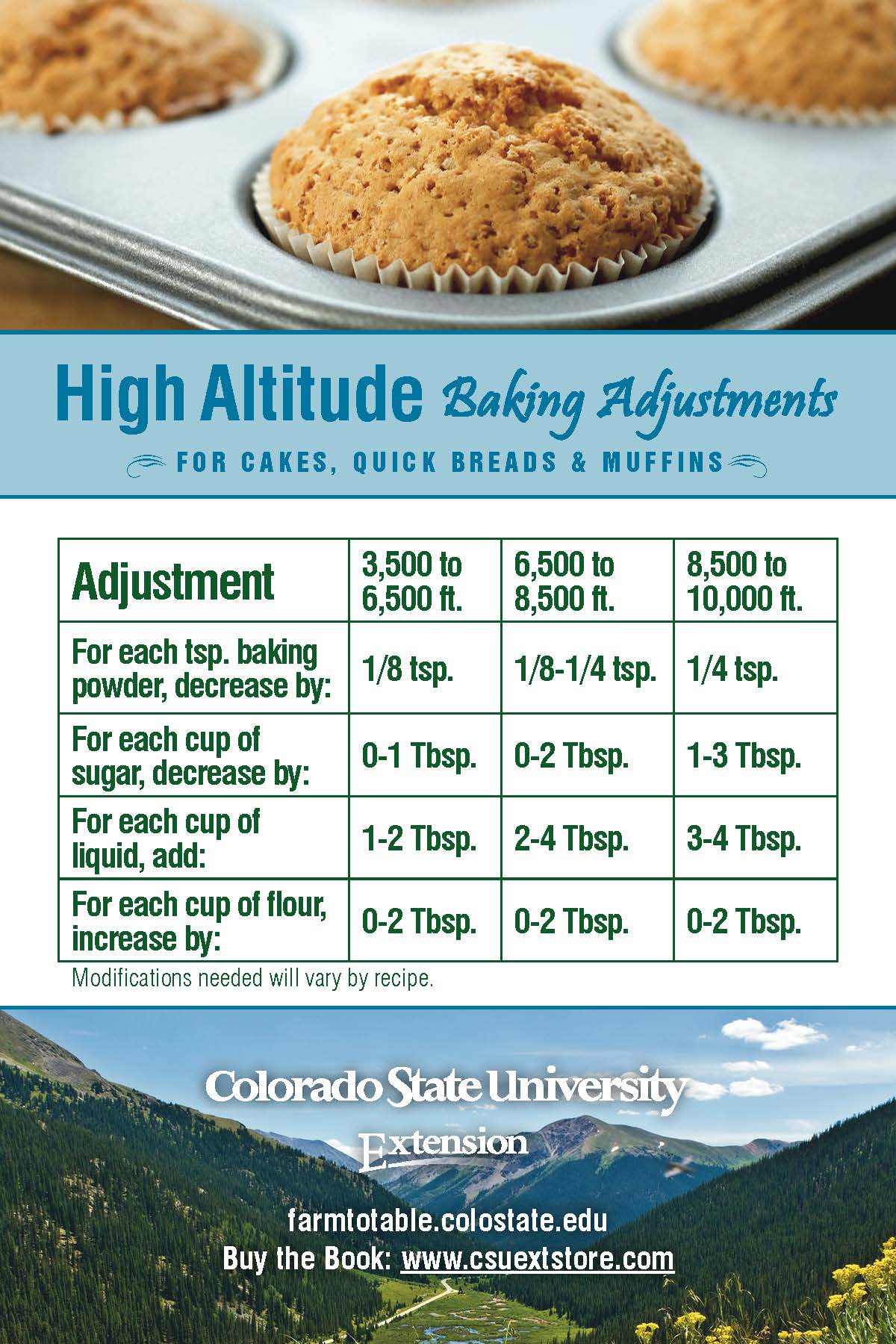
The following has been posted with permission from Susan Purdy: SARAH SAYS: The best reference information and and book I have found on the subject is Susan Purdy's website. If you’re not up for figuring out the math for yourself, worry not, dear reader - I’ve pulled together some of the finest high altitude baking recipes from the internet for your convenience.Copyright © 2000 Sarah Phillips All rights reserved. Whole wheat flour has more protein and should generally be used in conjunction with lighter flours for a more appealing texture, but can help a lot with collapsing cake syndrome. If you’re utlizing all of this advice and still facing falling breads and collapsing cookies, try substituting 25% of the flour in your recipe for a whole wheat flour instead. Getting it right baking at high altitudes is mainly a strategy in using the right proportions of ingredients, but sometimes flour with a higher protein content can help to maintain the structure of your goods. Yeast breads will rise faster at higher elevations, but will collapse in on themselves if you don’t reduce the amount of yeast called for in the recipe. Yeast Decrease by 25% above 3,500 ft and account for a shorter rising time Reducing the amount of your leavening agents will help your baked goods to rise more gradually at higher elevations. Baking Powder/Soda Decrease by 20% above 3,500 ft, by 50% above 5,000 ft, and by 75% above 6,500 ft It’s all about compensating for faster evaporation here - keep things from drying out and crisping up before they rise by adding a bit more liquid, whether it’s water, milk, oil, or eggs. Liquids Increase by 1 to 2 tbsp per 1,000 ft, and 1 ½ tsp per additional 1,000 ft Be sure to reduce to keep your cakes, brownies, and cookies from collapsing. Since liquids evaporate faster at higher elevations, the concentration of sugar goes up. Flour Increase by 1 tbsp at 3,500 ft, and by 1 tbsp per 1,500 ftĪdding flour helps to steady the rise of your baked goods and add structure to them as they grow in the oven. A higher temp means a faster cook, so be careful not to overdo it. This is to compensate for the increased oven temperature you’ll need at higher altitudes. Since at higher altitudes evaporation happens faster, you’ll need to help your baked goods set up a bit faster in the oven by raising the temperature.

If this is you, then you need to make some adjustments to your recipes to ensure that your baked goods rise evenly. High altitude is generally considered 3,500 or more feet above sea level. High Altitude Baking - Good Rules of Thumb Often, baked goods will rise before the ingredients have set up enough of a structure to support the rise, and the result is a flat and imploded batch of brownies.

The air is also drier, which means that the batter dries out and rises very quickly at higher altitudes, resulting in an irregular rise that creates large, random air pockets in the baked good, causing them to fall flat after you get them out of the oven.

The higher you go into Earth’s atmosphere, the thinner the air gets, which means there’s less resistance for the leavening agents as they push the dough higher and higher. The reason is in the air that you breathe at higher elevations. It’s a perplexing problem to have: you go from living around sea level and having breads that rise beautifully, to living in the mountains, where they make a promising start, and then fall completely flat. Which type of leavening agent you’ll need will largely be determined by the other ingredients in your recipe, so it’s important to note that, more often than not, they are not interchangeable. Yeast works to make breads rise by actually eating some of the heavier glucose in the dough, and then excreting gaseous carbon dioxide waste, which causes the dough to rise. Yeast, on the other hand, is a biological leavening agent because it’s actually a living bacteria.

Baking soda and baking powder are both chemical leavening agents, because they create air pockets in batter and dough by reacting with the other ingredients. There are two types of leavening agents: chemical and biological.
#HIGH ALTITUDE BAKING HOW TO#
Here we’ll talk about how leavening agents work, why altitude plays a role, and how to adjust your recipes to perfect the rise, even in the mountains.įirst, a lesson in Baking 101 - leavening agents.Ī leavening agent is just a general term for any ingredient that helps a baked good to rise, like baking soda, baking powder, or yeast. Learning the science of leavening can help you get the perfect rise out of everything from sourdough loaves to chocolate cupcakes. If you haven’t made adjustments in your bread, cake, and cookie recipes for your elevation though, it’s possible that your baked goods aren’t turning out as fluffy as they should be.
#HIGH ALTITUDE BAKING FULL#
If there’s one thing that Montanans know, it’s that baking is full of ups and downs.


 0 kommentar(er)
0 kommentar(er)
